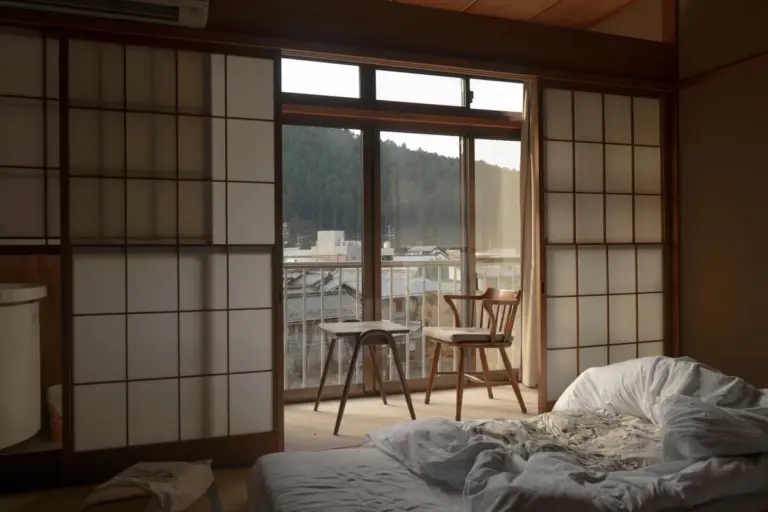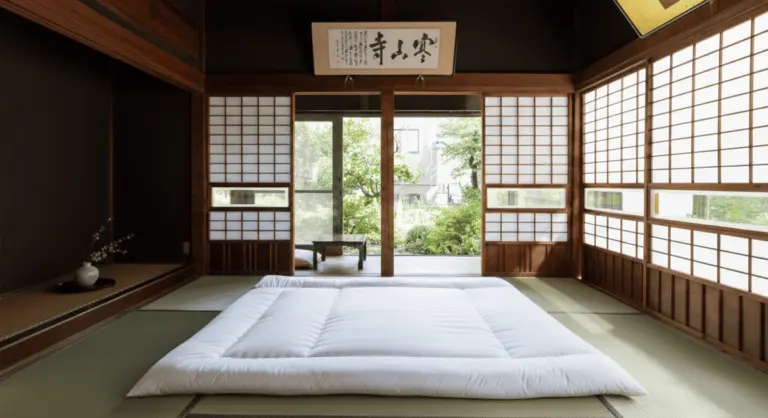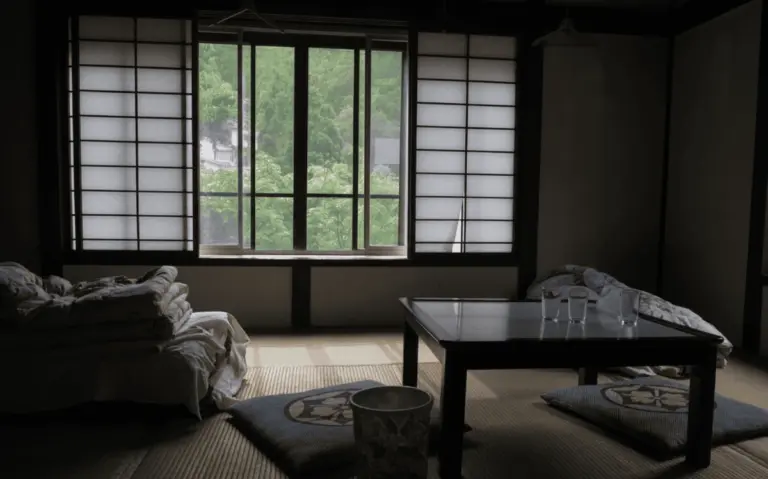How to Layer Japanese Bedding for Every Season
The Rhythm of Comfort: How Japan Layers Bedding Through the Seasons
If there’s one secret behind Japan’s year-round sleeping comfort, it’s not just what you sleep on — it’s how you layer. Japanese bedding layering isn’t fixed; it’s fluid, shifting gently with the seasons. Each layer breathes, dries, and adapts — a quiet choreography of fabric, air, and rhythm. This mindful approach is born from Japan’s humid summers and cool winters, where sleeping in harmony with nature isn’t tradition — it’s common sense.
Spring: Light Warmth and Renewal
As winter fades, bedding becomes lighter but still cozy. Spring in Japan can swing between chill and warmth, so japanese bedding layering focuses on flexibility.
Start with a shikibuton (敷布団) — the firm cotton mattress placed directly on tatami or a futon base — then add a thin pad for softness, a kakebuton (掛け布団) with moderate filling, and a breathable cotton or gauze cover. Most households use a shikibuton about 2–3 inches (5–8 cm) thick, providing firm but gentle support for spinal alignment. This combination creates gentle insulation without trapped heat, perfect for crisp mornings and mild nights.
Summer: Breathable and Barely There
When tsuyu (the rainy season) ends and humidity peaks, bedding shifts toward breathability. Heavy comforters are stored away; instead, people rely on lighter layers designed to let air move freely.
A light shikibuton with a breathable cover pairs with a 3–4 layer gauze blanket (ガーゼケット) for cooling comfort. Optional bamboo or linen pads add ventilation, and some households place a tatami or igusa mat beneath the futon to enhance airflow during humid months. This setup keeps the body cool and dry — you don’t fight summer heat; you float through it.
Autumn: Layering in Balance
Autumn brings warm days, cool nights, and clear air — the ideal season for transition. A typical setup includes a cotton shikibuton topped with a thin pad, a 5-layer gauze blanket or light kakebuton, and a flannel or brushed-cotton cover for soft warmth.
Many Japanese bedding brands market this arrangement as “autumn futon sets”, combining moderate insulation with plush textures. It reflects the seasonal mindset: never too much, never too little — just enough for the air to breathe between layers.
Winter: Warmth with Air, Not Weight
Winter comfort is built through layers that trap air, rather than sheer thickness. The base is the same shikibuton, sometimes paired with a wool pad for added insulation.
On top, most homes layer a thick kakebuton (down or synthetic) and a soft blanket or coverlet; on the coldest nights, a flannel cover or even a kotatsu blanket may appear. In colder regions such as Hokkaido, families may add an electric blanket or wool underpad, yet heavy Western-style duvets remain uncommon. The key is warmth that breathes — even in January, the air inside a futon feels fresh, not stuffy.
Caring for Your Layers
Each season brings its own rhythm of care. Households often air bedding under sunlight once or twice a week (hiboshi), switching layers as weather shifts. Spring means fluffing and sun-drying winter futons; summer calls for storing thick items in breathable bags; autumn is the moment to wash and sun gauze blankets before cooler weather; winter benefits from regular airing and rotation of down comforters to prevent flattening.
During the rainy season, many people use indoor futon dryers (kairo-type warm air machines) to simulate sunlight airing. Simple rituals keep layers fresh — not just physically, but emotionally too. The act of changing bedding with the seasons connects you to the quiet cycle of the year.
The Harmony of Seasons
Japanese bedding layering isn’t only about temperature; it’s about mindfulness. You learn to listen to air, texture, and scent. When summer’s gauze gives way to winter’s flannel, and back again to the whisper of cotton, you feel the seasons pass not on a calendar — but under your hands. It’s a rhythm that invites you to rest, breathe, and remember: comfort isn’t static. It changes, like the sky outside your window.





